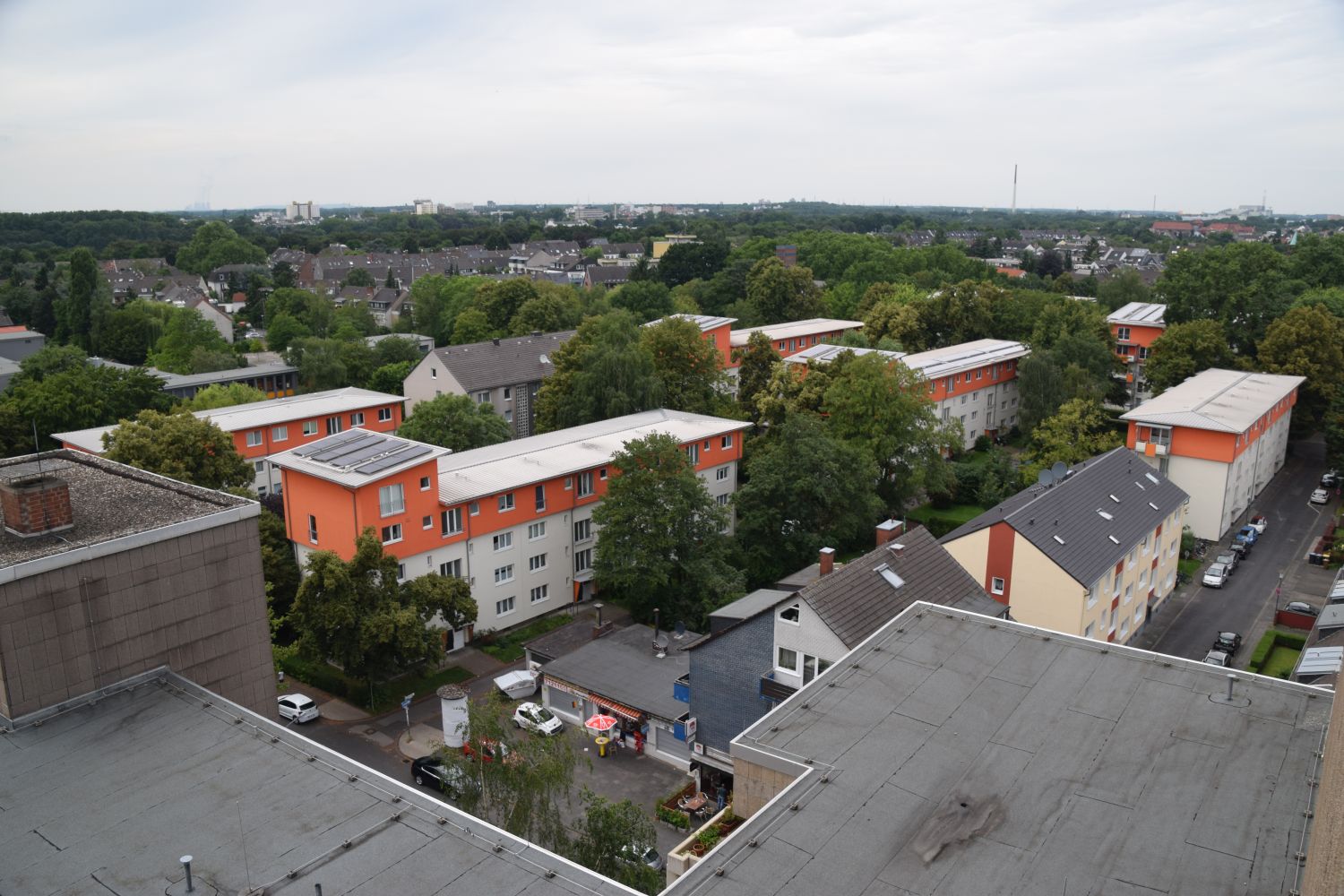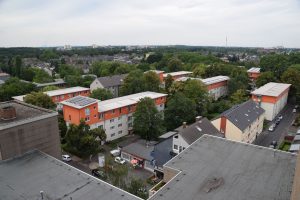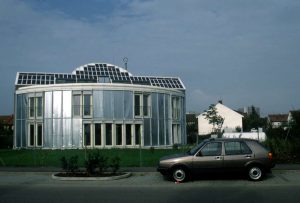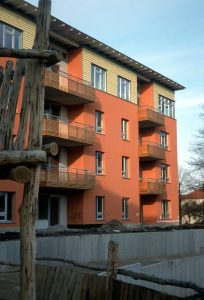 13156 Berlin-Pankow: Arbeitsgemeinschaft Winfried Brenne Architekten / Joachim Eble Architektur, 226 WE, at the completion it was the then largest roof-integrated solar power system on residential buildings in Europe; research study on the costs of ecological building materials (comparison with Berlin reference house). Reference: 1999
13156 Berlin-Pankow: Arbeitsgemeinschaft Winfried Brenne Architekten / Joachim Eble Architektur, 226 WE, at the completion it was the then largest roof-integrated solar power system on residential buildings in Europe; research study on the costs of ecological building materials (comparison with Berlin reference house). Reference: 1999
| Address | Heinrich-Böll-Strasse, Schillerstrasse |
| Approach | via Dietzgenstraße; tram line 52, stops Heinrich-Böll-Straße (Dietzgenstraße) and Nordend (Schillerstraße) |
| Location | within the settlement area on former market garden area |
| Project data | |
| Construction time | Construction started in 1995; |
| Completion of 2nd construction phase 1999; Construction phase 2: 1996- 1999 | |
| Architect | Joachim Eble/ Franz Jaschke |
| ARGE Winfried Brenne, Joachim Eble with Franz Jaschke | |
| and nps architects BDA Nietz Prasch Siegl | |
| Owner | GSW Gemeinnützige Siedlungs- und Wohnungsbaugesellschaft Berlin mbH Owner is Deutsche Wohnen (as of 3/2020) |
| Size | 8 hectares |
| Residential units | 226 WE |
| Construction phase 2: 192 flats (1st subsidy), 24 condominiums | |
| Apartment type | Predominantly row-shaped multi-storey housing; terraced houses |
| Notes | Southern part of the original concept (construction phase 3 (?), south of Kreuzgraben) not realised, instead conventional single house/row house development; construction phase 4 (?) west of Heinrich-Böll-Strasse still fallow land (site inspection/comparison with # 3) |
| General | |
| Project development | On a former market garden area, housing close to the city was planned; the owner of the area was GSW, which tried to implement various "eco-buildings" together for the first time in a larger residential area (such as: solar orientation of the buildings, rainwater concept, building materials). For the (realised) construction phase, subsidies for social housing were granted ("social housing"). Hopefully started in 1994 under the title "Gartenhofstadt Brosepark", the project got caught up in the housing demand in Berlin that began in the mid-1990s (migration out of Berlin), so that the southeastern construction section was later redesigned into semi-detached houses, and the western section still lies fallow. However, the northeastern part, which was realized according to the original concept, is worth seeing. |
| Eco-policy | carried by the city-owned housing association GSW |
| Urban planning, architecture | ||
| Urban planning | Inner-city living with predominantly south-facing row buildings. The different position of the buildings results in a slightly different character of the courtyards. | |
| Architecture | Apartment building rows; "solar-integrated urban development", the buildings are south-facing (4-storey), or west-facing (5-storey); | |
| Materials construction | conventional, plaster buildings; upper floors (4th - 5th) set off by planking | |
| One of the buildings is designed to be particularly ecological: Interior ceilings and walls partly wood, clay plaster, wall surface heating | ||
| Energy | At the time, this was the largest roof-integrated solar power system with 145 kWp on residential buildings in Europe. Details of the Photovoltaic system |
|
| Sewage Technology | Partial use of water-saving toilets (50 % water savings); | |
| Stormwater is conveyed to the eastern edge of the completed development in an open "creek" to a pre-existing ditch south of the development. | ||
| Free space | ||
| Front yard | Distance green | |
| Garden | Terrace for ground floor apartments, partly terraced with gabions in relation to the surroundings | |
| Settlement free space | at the eastern edge continuous path axis, parallel to the rainwater stream; connects playgrounds with each other | |
| Playground | Playground in every courtyard, large playground on the southern edge, facing the moat | |
| Pitches | free, in the courtyards, partly under pergola | |
| Street | asphalt; Paths in the open space half paved/half water-bound surface |
|
| Sources | Building in Pankow. Brochure, published by the district office of Pankow, undated (1995 ?), here p. 41/42 "Gartenhofstadt Brosepark" (today: Heinrich-Böll-Siedlung). Student research project Holger Wolpensinger Uni Kalrsruhe |
|
| Links | City of Berlin: www.stadtentwicklung.berlin.de/...boell_siedlung... Deutsche Wohnen: www.deutsche-wohnen.com/...berlin-heinrich-boell-siedlung |
|
Last Updated: December 6, 2020
Similar projects on sdg21:
All project/s of the planning office: Brennen Architects, Eble Messerschmidt Partner (EMP); Urban region: Berlin and surrounding area; Country: Germany; Characteristics: 03 - 4 floors, Residential, Eco-settlement; typology: Settlement; Thematic: Photovoltaics, Wooden houses - a part of the settlement, Earth Building


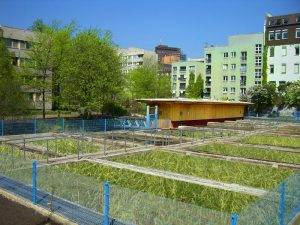 10963
10963